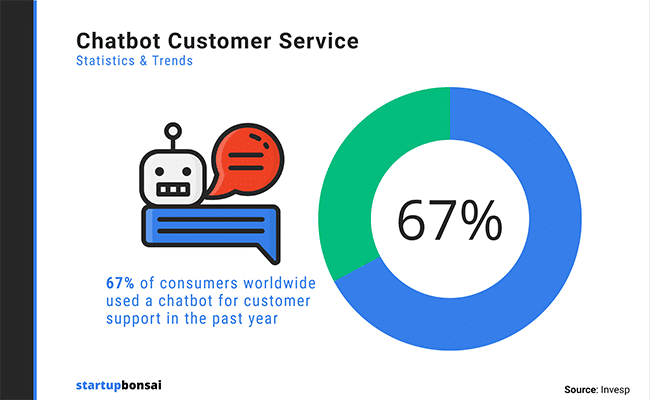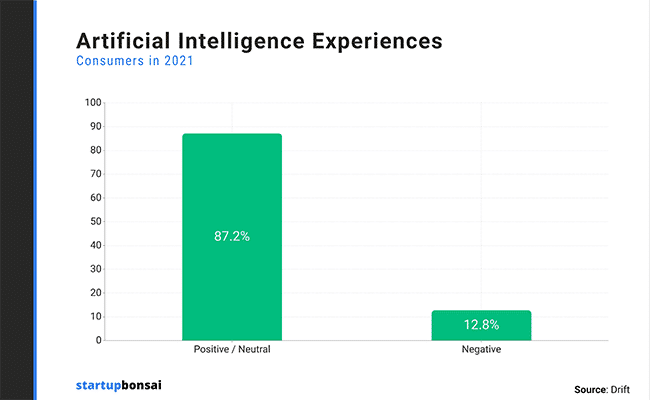
5 Ways to Revolutionize Your CX Strategy with AI
Too many conversations about artificial intelligence assume a binary. Either the robots replace the people in a particular role or use case, or they don’t.
This black-or-white thinking could be appropriate in limited applications. Machines and automation are replacing humans in various functions. This is particularly the case in the industrial economy, but it also continues to increase in the professional services world. Changes in the workforce will be inevitable as AI programs become more sophisticated and functional.
But at least for the foreseeable future, the middle ground will be much more common. Artificial intelligence (and other related forms of “smart” automation) will assist humans without totally replacing them. AI will make people more efficient, effective, and just plain good at what they do without removing them from the decision process.
There are already countless examples of this in consumer-facing industries. In 2021, a clear majority (67%) of people interacted with a chatbot in some capacity, and that figure has risen significantly in the years since.

We’re at the point where customer-contact teams that don’t leverage AI face reputational risk. A hybrid approach that blends human and machine intelligence is critical to a first-rate customer experience (CX). If you’re behind the curve, it’s time to get serious about recharging your CX strategy with AI.
How to Improve Your CX Strategy With AI
Start with these five results-oriented, AI-enabled CX strategies.
1. Leverage AI Tools for Quality Assurance
Quality assurance (QA) grading can be a complex, time-consuming process for CX teams, especially if teams are still using spreadsheets. Human-powered QA graders have limitations to the number of tickets they can evaluate, and the evaluation of interactions can be open to interpretation. Since traditional QA relies on a random sample of customer and agent conversations, these limitations mean fewer interactions to analyze and less consistency in the data presented.
With the help of AI, teams can enhance their efficiency by expanding the scale of QA insights to 100% of customer interactions, enabling companies to have an immediate “heat map” of conversation quality metrics. This makes it easy for them to identify ”hot spots” of friction that demand attention on the quality of interactions between agents and callers.
Quite possibly the most intriguing AI development impacting QA is the capability to read into the emotional aspect of interactions between customers and agents. According to MaestroQA CEO Vasu Prithipati, Sentiment analysis has emerged as a powerful tool for CX and QA professionals, enabling them to uncover the emotional nuances within customer interactions and make data-driven decisions. However, there is still untapped potential in this field as the impact of AI-powered sentiment analysis continues to be a research-heavy topic. CX leaders have only scratched the surface of its capabilities.
Companies should keep in mind that leveraging AI-powered sentiment analysis doesn’t take humans out of the equation. They still need to act on the outputs — deciding, for example, whether the solution to persistently low CSAT scores is an overhaul of team processes or a tougher approach to human resource management.
2. Deploy Next-Generation AI Chatbots to Answer Straightforward Customer Queries
“Human customer support or chatbots” is one of the many human-AI interfaces that’s not a binary, either-or proposition. CX teams can retain human agents (and maintain overall staffing levels) while more aggressively deploying automated agents in low-degree-of-difficulty settings as part of their CX strategy.
Customers expect to interact with chatbots, and studies suggest their experience is surprisingly positive. More than six to one say they have positive or neutral interactions with chatbots.

The logical next step for CX teams is to deploy chatbots as frontline problem-solvers for customers with relatively simple queries instead of just the standard website “greeters” or phone menu gatekeepers. This frees up the human agents who’d typically address those concerns to “graduate” to supervisory and backup roles where they monitor chatbot output for quality and take over when queries prove too difficult for the bots.
3. Use Natural Language Search & Generative AI in Your Knowledge Base
Natural language processing has been around for many years. Generative AI feels like a more recent development due to rapid improvements in output quality since 2022. But it, too, has older roots. The upshot is that most users are familiar with these technologies and willing to leverage them in self-help settings.
What this means for your CX strategy is that self-help databases (principally knowledge bases, but other resources as well) are ripe for natural language and generative AI deployment.
Integrating a custom ChatGPT or white-labeled generative instance with an existing self-help database can dramatically improve the customer experience by producing more relevant, personalized results over shorter periods while eliminating the tedious search-click-and-repeat process that puts many users off. Those put-off users are liable to take their easy-to-solve problems to the call center, congesting the queue for others who do need hands-on help.
4. Use Predictive AI to Serve More Relevant Product Recommendations
CX is about more than ensuring an excellent customer experience for help-seekers. It encompasses every point of customer contact, from the very first introduction to your brand to the 10th repeat sale. This means it covers what many know as “on-page marketing” — the recommendations your website and e-commerce portal serve users as they navigate.
These recommendations must be relevant, timely, and personalized to the extent possible. Traditional recommendation engines might leverage order histories and customer-provided data to generate tolerable suggestions, but anyone who’s used an outdated web shop knows that these only go so far.
Predictive AI is critical for a truly exceptional customer experience that increases a prospect’s likelihood of repeatedly converting. Recommendation engines that use predictive AI can digest far more variables than “dumb” engines and develop far more relevant insights. They leverage the full breadth of available data, from similar buyers’ past order histories to the specific user’s recent browsing patterns. Their high-quality outputs grease the sales funnel and, it bears repeating, increase conversion rates.
5. Tap Next-Generation Retargeting Networks for Better Customer Retention
It’s no secret that retargeting can drive significant marketing growth at a relatively low cost. In fact, retargeting is the most cost-effective way to claim “second chance” conversions that would otherwise not occur.
Yet many brands don’t bother with it at all. Their reluctance is often rooted in outdated misconceptions about retargeting as a spammy “blunt instrument” that users either ignore or actively disdain. But like AI-enabled on-page recommendation engines that serve up relevant results, next-generation retargeting tools leverage machine intelligence to provide actionable, personalized ads and reminders. Don’t discount them.
What’s Next for AI in CX Strategy?
The pace of AI advancement is picking up. It’s getting difficult even for seasoned observers of the space to predict where things are headed, let alone where they’ll be in five or ten years. There’s also the less exciting but real possibility of a prolonged “AI winter” as advances slow down and reality catches up with the hyped-up idea that artificial general intelligence is just around the corner.
What seems very likely is that the quality of “weak” AI programs like ChatGPT will continue to improve incrementally in the months and years ahead. Even if there’s no intelligence revolution in the near future, steady improvements will continue to enhance and streamline the customer experience — and make CX teams’ lives easier and more productive.
In the not-too-distant future, human CX agents could spend little, if any, time interacting directly with customers and most or all of their time on quality control, workflow improvements, and even product development — behind-the-scenes work that leverages their irreplaceable human insights to improve the customer experience.






